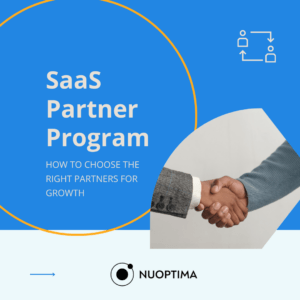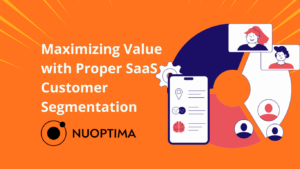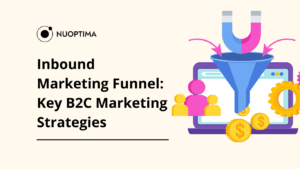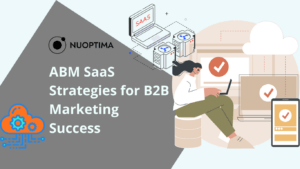Introduction
In the current digital era, SaaS (software-as-a-service) has become a pivotal component in the business world. Its significance is underscored by the way organizations across the globe rely on cloud-based applications to streamline operations, enhance productivity, and foster collaboration. As such, the prominence of software marketing has grown in tandem, becoming an essential facet for enterprises aiming to promote their cloud solutions.
Historically, the promotion of software was a straightforward affair, often limited to direct sales or via physical stores. However, as technology advanced and the internet became ubiquitous, the methods of marketing software transformed. SaaS marketing has also shifted from traditional advertising methods to more nuanced, content-rich, engagement-focused tactics. The global reach of the internet and the changing dynamics of customer-business interactions in a connected world have had a huge impact on how businesses want to access software through subscriptions.
Understanding this evolution is crucial. It offers insights into the journey of marketing and provides a foundation upon which future marketing endeavors can be built. As we delve deeper into the playbook, it’s essential to recognize the roots and the trajectory of SaaS marketing to appreciate its current methodologies and anticipate future trends.
Understanding SaaS Marketing
SaaS is a cloud-based service where you access an application via an internet browser instead of downloading software on your desktop PC or business network to run and update. The software applications can be anything from office software to unified communications among a range of other available business apps. This is why online software and the cloud have become popular – they simplify many technology issues. Below, we look at some of the main characteristics of SaaS marketing and how they differ depending on your audience. For SaaS business founders, check out our list of SaaS books to deepen your understanding and stay ahead in the industry.
Characteristics of SaaS Marketing
SaaS marketing is the process by which these online services are promoted and sold to potential business users. It encompasses a range of practices, including content promotion, search engine optimization (SEO), and paid advertising, but is distinct in its focus on promoting and selling subscription-based software.
Here are some of the main characteristics of SaaS marketing:
- Subscription Model: SaaS operates on a subscription model, unlike traditional software sales. Monthly or annual subscriptions renew unless canceled by the user.
- Continuous Updates: One of the benefits of online software is that it can be updated without any input from the user. This means the software can be improved on the fly without waiting for the user to install anything.
- Scalability: Software solutions are often scalable, allowing companies to adjust their level of service based on their needs. This scalability is a key feature for micro SaaS businesses, which often target niche markets and require flexible solutions.
Developing a comprehensive SaaS marketing plan is essential to effectively leverage these characteristics and ensure the success of your SaaS product.
Gain expert insights below in a video from our CEO and Founder, Alexej Pikovsky. Here, he compares B2B against B2C SaaS on the odds of financial success before discussing six ways to forge a $100 million ARR business.
B2B vs B2C SaaS Marketing
While both B2B (Business-to-Business) and B2C (Business-to-Consumer) SaaS marketing promote software services, their approaches differ significantly due to the nature of their respective audiences.
Here are some of their main differences:
| Aspect | B2B SaaS Marketing | B2C SaaS Marketing |
| Target Audience | Businesses, professionals | General consumers |
| Sales Cycle | Longer, often requiring multiple touchpoints | Shorter, more impulse-driven |
| Decision-making | Multiple stakeholders involved | Usually individual or household-based |
| Pricing Strategies | Tiered, volume-based, often negotiable | Fixed, straightforward pricing |
| Key Metrics | Lifetime Value (LTV), Customer Acquisition Cost (CAC), Retention rate | Conversion Rate, User Engagement, Churn |
| Marketing Channels | LinkedIn, industry events, email campaigns | Social media, influencer marketing, SEO/SEM |
| Content Strategy | Whitepapers, case studies, webinars | Blog posts, how-to guides, videos |
| Relationship | Ongoing, often contractual | More transactional, less formal |
| Customer Support | Dedicated account managers, enterprise support | Automated help centers, community support |
| Messaging | Problem-solving, SaaS ROI-focused | Emotional, convenience-based |
| Regulatory Concerns | Compliance (GDPR, HIPAA, etc.) is often a factor | Less often a concern |
While there are similarities in the way SaaS products are marketed, the strategies and tactics used can vary widely based on the target audience. Recognizing these differences is crucial for any business or individual looking to be successful in the B2B sector.
11 Key Components of a Successful SaaS Marketing Strategy
This section looks at the key components of a holistic marketing strategy. While each is valuable on its own, they become even more influential when used together. The synergy between them can help drive consistent growth and strengthen user relationships.
1. Content Marketing
Content marketing bridges enterprises and their audience, offering valuable insights, solutions, and education. Through mediums such as blog posts, videos, and infographics, companies can address common queries, challenges, and interests of their audience. Proper SEO ensures it reaches its intended audience with techniques like relevant keyword inclusion, meta descriptions, and user-friendly page/article structures.
Example: HubSpot

HubSpot, a leading CRM platform, consistently produces educational blog posts, webinars, and e-books, positioning itself as a knowledge leader in inbound marketing.
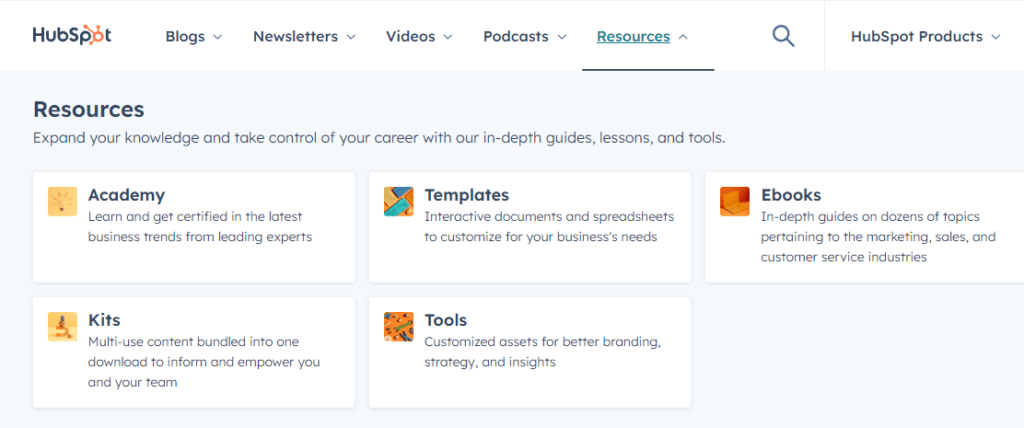
2. Email Marketing
Email is a direct line to potential and existing subscribers. Personalization goes beyond using the recipient’s name; it’s about sending relevant content based on user behavior or preferences. Segmenting, or dividing the contact list based on certain criteria, ensures that content resonates with its recipients, leading to higher engagement rates.
Example: Slack

Slack, a communication tool, uses segmented email campaigns to offer tips, showcase new features, and engage customers based on their usage patterns.

3. Micro Marketing
Micro marketing is the practice of tailoring campaigns to a certain segment or group. For SaaS businesses, this could mean targeting a specific industry or company size. By addressing the distinct needs and pain points of these groups, companies can offer more relevant solutions and build stronger relationships. This approach is particularly beneficial for micro SaaS businesses, which thrive on serving highly specific niche markets with tailored solutions.
Example: Monday.com

Monday.com, a work operating system, has campaigns tailored for project managers, thereby addressing their specific challenges.
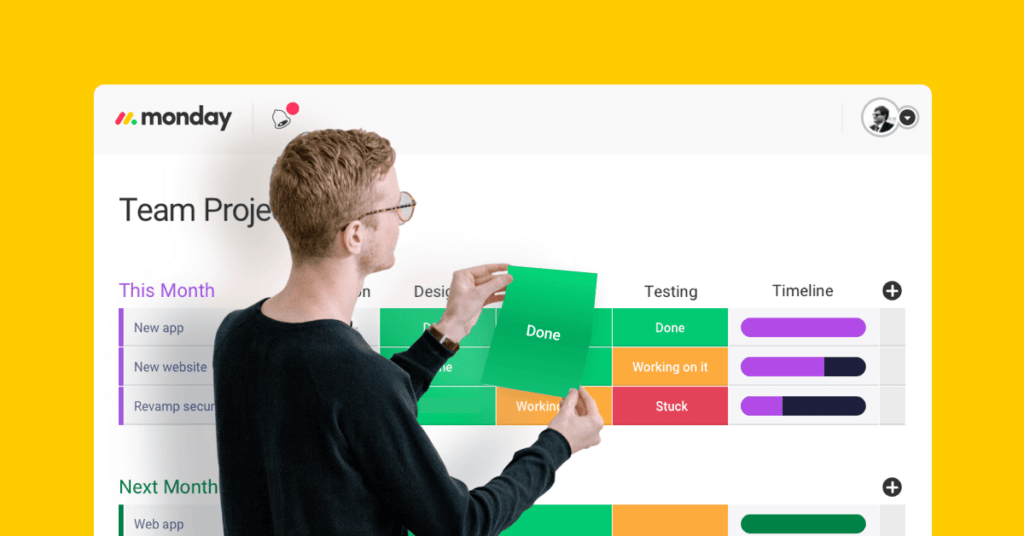
4. Freemium Marketing
The freemium model offers users access to basic features at no cost, with the option to upgrade for advanced functionalities. This model attracts a wider user base and allows subscribers to test and see how effective the software is before committing financially. The challenge lies in determining which features to include in the free version to strike a balance between value and enticement.
Example: Dropbox

Dropbox, a cloud storage solution, offers a free basic version with an option to upgrade for more storage and features.
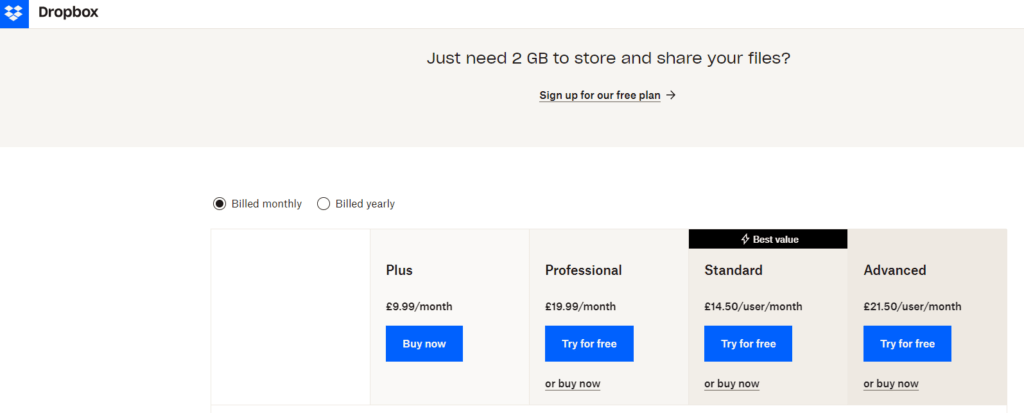
5. Social Proof Marketing
In an age of information overload, potential users often turn to their peers for recommendations. Showcasing testimonials, user reviews, and detailed case studies can provide the reassurance needed for potential customers to take the plunge. It’s a testament to the product’s value and reliability.
Example: Zoom
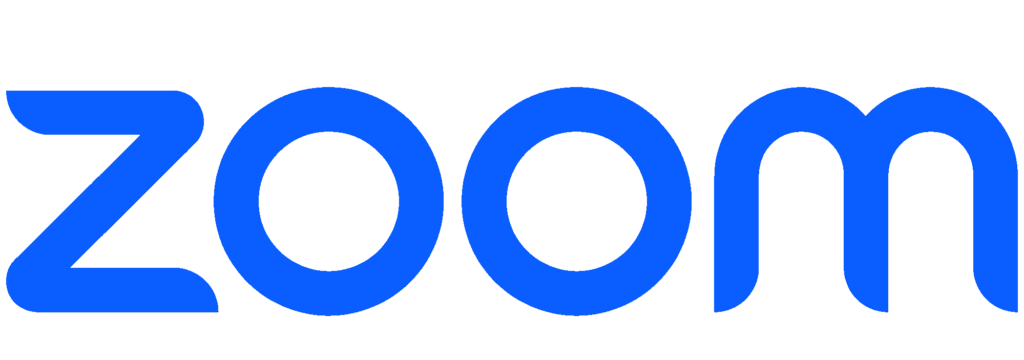
Zoom, a video conferencing tool, uses case studies from various industries, demonstrating its versatility and reliability.
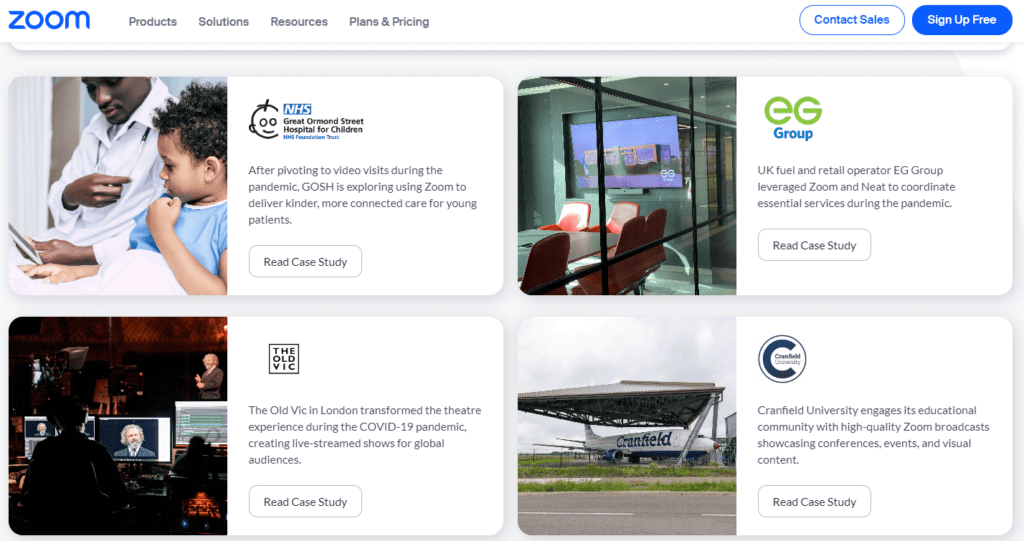
6. Viral Marketing
Viral marketing revolves around content that resonates deeply with its audience that they feel compelled to share it. This could be due to humor, a fresh perspective, or tapping into current events. The key is authenticity and relatability.
Example: Trello

Trello, a task management tool, released engaging video content explaining its features in real-life scenarios, which garnered significant shares and engagement.
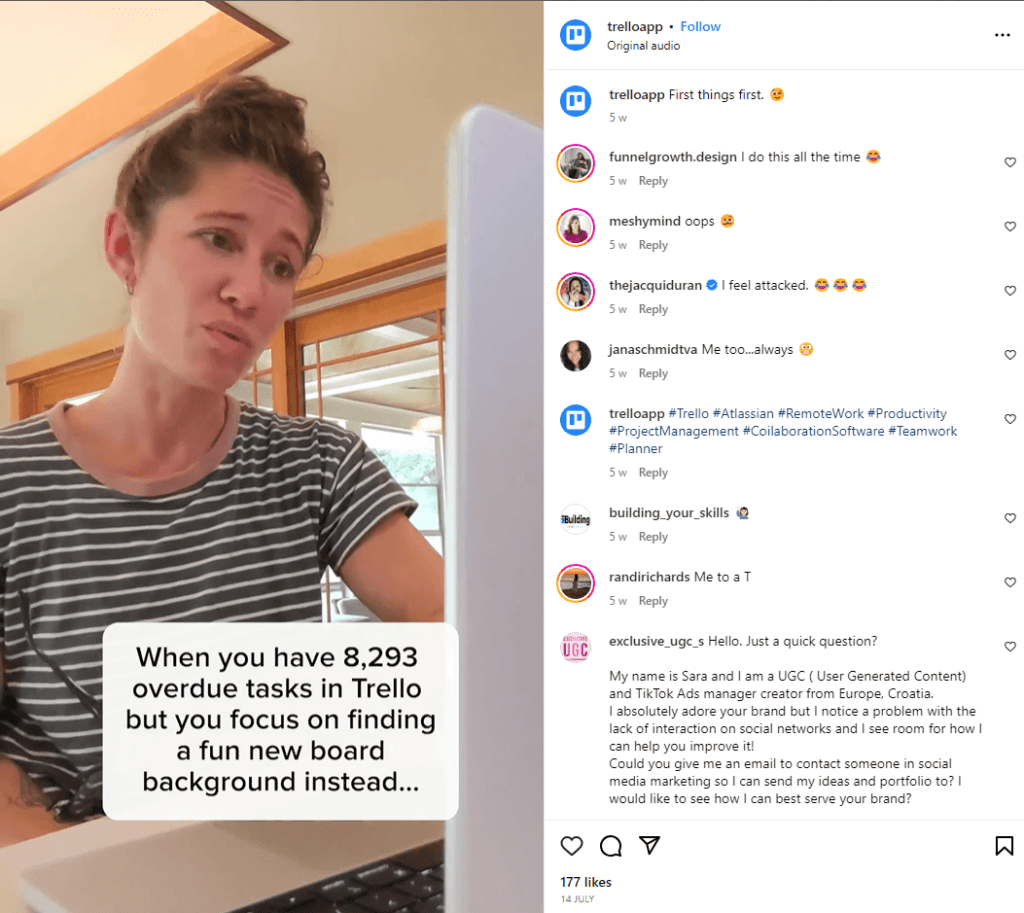
7. Affiliate Marketing
SaaS affiliate marketing involves partnering with individuals or entities to promote a product in exchange for a commission on sales. For SaaS enterprises, this can extend their reach, tapping into the audiences of their affiliates. It’s a win-win, with partners earning from promotions and companies gaining more users.
Example: Shopify

Shopify, an e-commerce platform, has an affiliate program where partners earn commissions for each user they refer, expanding the platform’s reach without direct advertising.
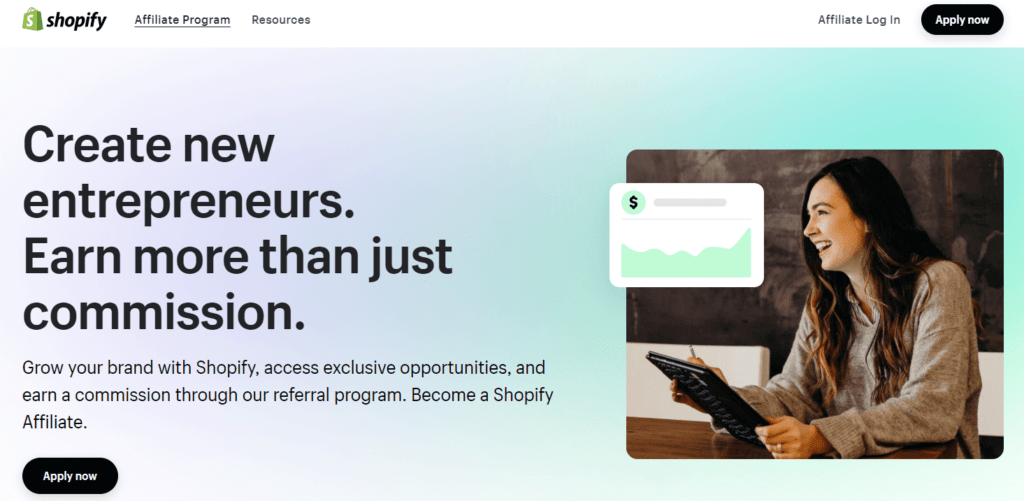
8. Tool Marketing
Many SaaS products offer specific tools or integrations that enhance their core functionalities. By promoting these, businesses can attract subscribers seeking these particular tools, offering them a more streamlined solution to their challenges.
Example: Asana

Asana, a project management tool, promotes its integrations with other platforms like Microsoft Teams or Adobe Creative Cloud.
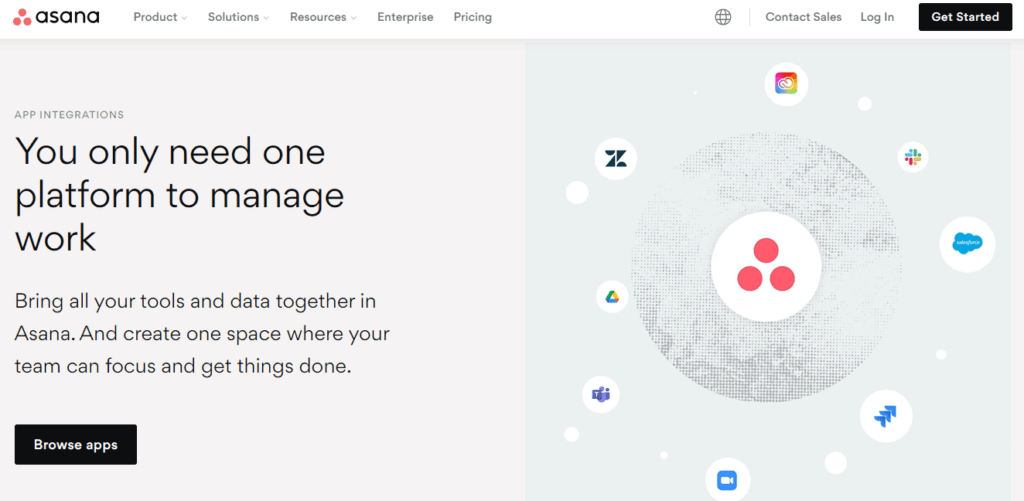
9. Discount Marketing
Promotions and discounts can act as a catalyst for decision-making. Such incentives can accelerate the conversion process, whether it’s a seasonal offer, a first-time user discount, or a limited-time price reduction.
Example: Planly

Planly, a social media posting tool, has offered promotional prices during Black Friday events to help drive sales.
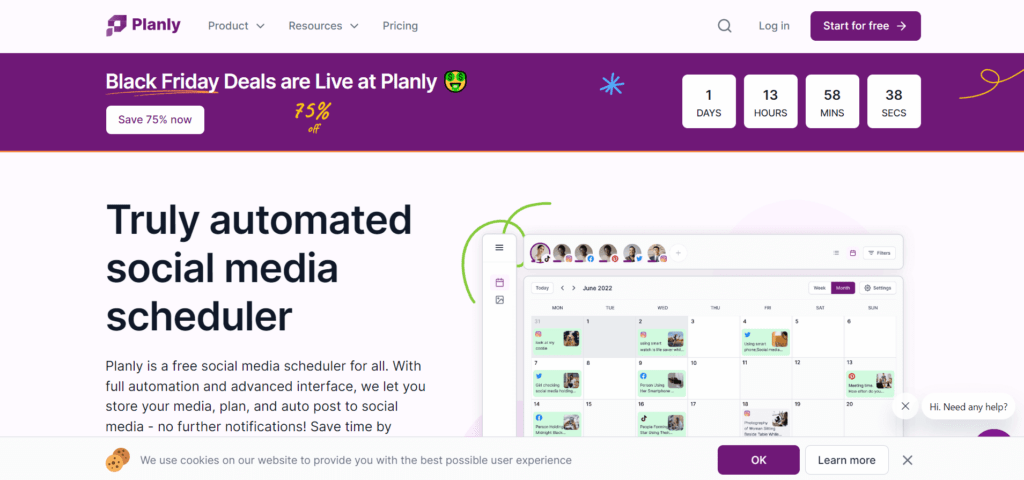
10. Niche Marketing
Rather than casting a wide net, niche marketing focuses on specific industries, company sizes, or job roles. By understanding and addressing the unique challenges of these niches, software enterprises can position themselves as the go-to solution within that space.
Example: DocuSign

DocuSign, an electronic agreement service, targets specific sectors like real estate or healthcare, addressing the unique challenges and needs of these industries.
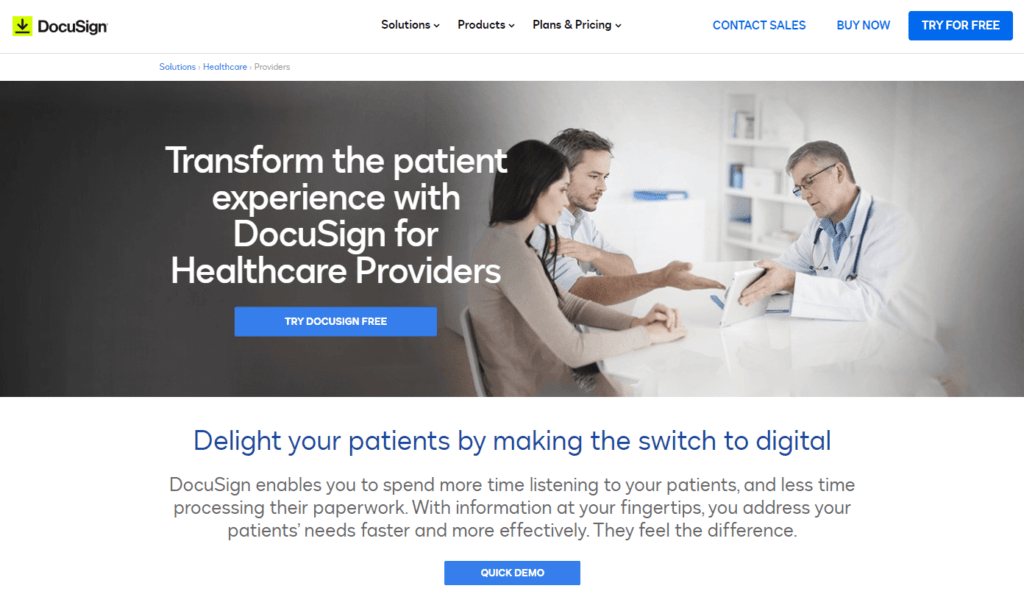
11. Flywheel Marketing
The flywheel model views users as the end result and integral to a business’s growth. Happy customers become advocates, referring others and providing positive feedback. This momentum, once gained, can sustain and accelerate growth, reducing the need for traditional push marketing.
Example: Intercom

Intercom, a messaging platform, ensures that existing subscribers have a positive experience, leading to referrals and organic growth.
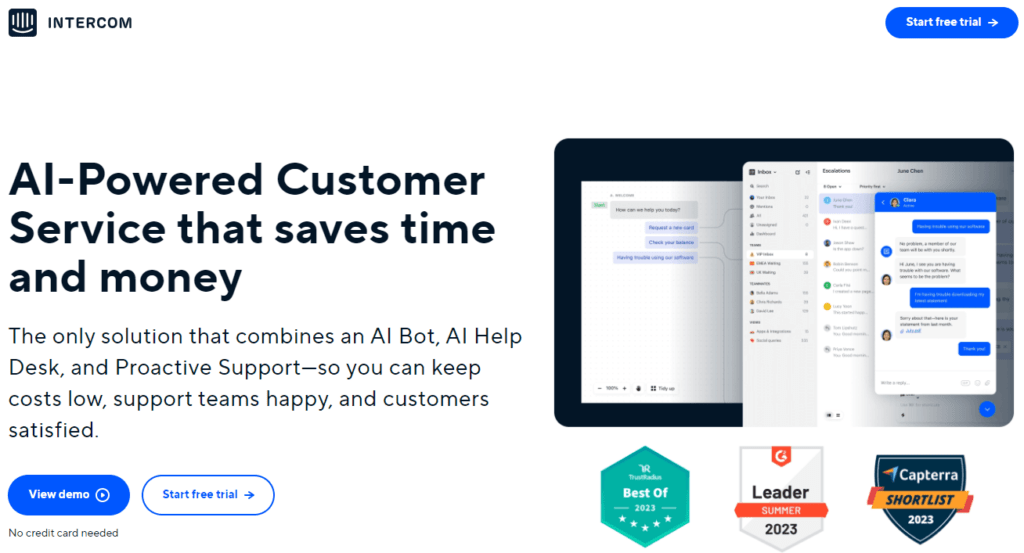
Navigating the B2B SaaS Customer Lifecycle
The journey of a customer within the SaaS realm is intricate, unfolding across various stages. This journey, often referred to as the customer lifecycle, begins when a potential user first learns of a product and culminates when they become its staunchest advocates. By having a decent understanding of each stage and implementing thoughtful strategies, your business can ensure a smoother, more enriching experience for your users and a lower churn rate. Implementing an ABM SaaS strategy can further enhance this lifecycle by focusing on high-value accounts and personalized engagement.
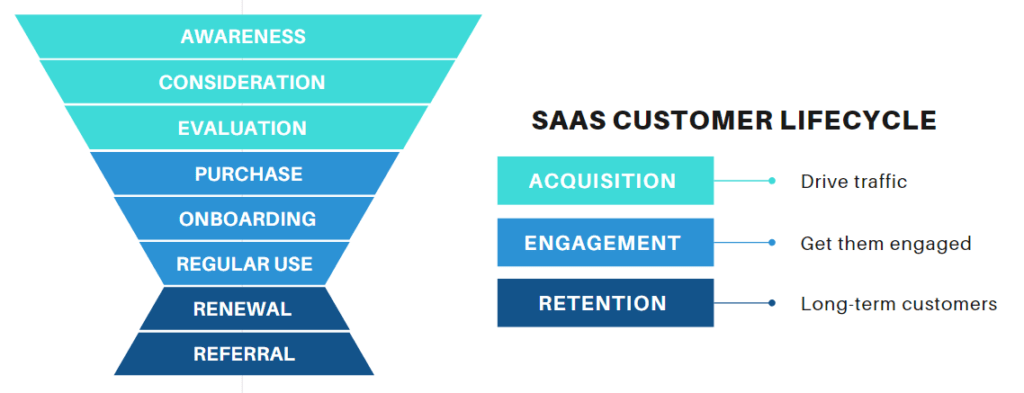
Stage 1: Awareness
At the outset, we have the awareness stage. Here, potential customers stumble upon the software product, perhaps through an insightful article, a social media post, or a recommendation. The key is to consistently produce educational content that resonates with the challenges or queries prevalent in the industry. Coupling this with SEO can amplify the product’s visibility, casting a wider net.
Stage 2: Consideration
As these potential customers delve deeper, they transition to the consideration phase. Now, they’re actively weighing various solutions, seeking the best fit. SaaS companies can facilitate this decision-making by offering detailed product demos or webinars. Additionally, presenting comparison charts or spotlighting testimonials can underscore the product’s edge over competitors.
Stage 3: Decision
Once they’re on the verge of making a decision, they enter the aptly named decision stage. A seamless sign-up process, transparent pricing details, and prompt customer support can tip the scales in favor of a purchase. Limited-time promotions or trial offers can further sweeten the deal.
Stage 4: Onboarding
Having chosen the product, customers embark on the onboarding phase. It’s crucial to make their initiation as intuitive as possible. Interactive tutorials, a robust knowledge base, and welcome emails can guide them, ensuring they harness the product’s full potential.
Stage 5: Retention
However, the journey doesn’t end with a successful onboarding. The retention phase is where the real challenge lies. Businesses can foster loyalty by continually refining the product based on user feedback and engaging subscribers with updates. Periodic newsletters or loyalty rewards can further cement this bond.
Stage 6: Expansion
For those customers seeking more, the expansion phase offers them avenues to delve deeper. Whether through premium features or integrations, enterprises should highlight the added benefits awaiting users. Thoughtful upselling or bundled deals can make this transition even more enticing.
Stage 7: Advocacy
Lastly, when customers are truly satisfied, they naturally progress to the advocacy stage. Their positive experiences translate into recommendations, bolstering the product’s user base. Engaging with these advocates, be it through social media acknowledgments or referral programs, strengthens their loyalty and attracts new customers.
The customer lifecycle is a testament to the symbiotic relationship between companies and their users. By understanding the nuances of each stage and crafting strategies accordingly, companies can ensure that this relationship thrives, benefiting both parties.
Innovative B2B SaaS Marketing Techniques
As the SaaS landscape continues to be increasingly competitive, your businesses must adopt and adapt to modern marketing techniques. Whether it’s the dynamic approach of growth-driven design, the engaging nature of video marketing, or the credibility offered by influencer partnerships, the following innovative methods can help pave the way for a more holistic and effective marketing strategy.
Growth-Driven Design
Growth-driven design (GDD) is a modern approach to website development. Instead of viewing a website as a static entity, GDD sees it as a dynamic asset that evolves based on user interaction and feedback. This iterative design approach prioritizes real-time data over assumptions, allowing enterprises to make informed changes that resonate with their audience. By continuously analyzing user behavior and making incremental improvements, GDD ensures that a website remains relevant, user-friendly, and aligned with the business’s goals.
Real-World Example

Salesforce is a prime example of a B2B software company that employs GDD. They recognize the dynamic nature of user needs and preferences, so Salesforce’s website undergoes regular tweaks and changes based on real-time user data and feedback. This iterative approach ensures that their site remains user-centric, offering the best possible experience to visitors.
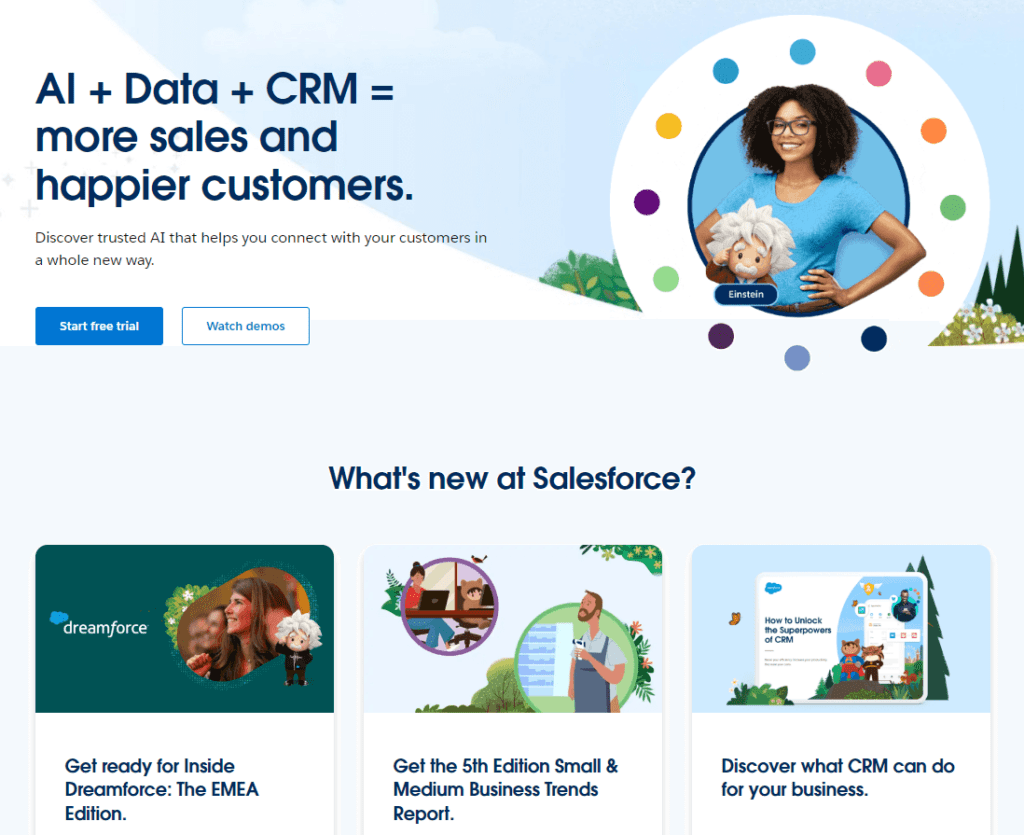
Video Marketing
The power of visual storytelling is undeniable. Video marketing harnesses this power to convey complex information in an engaging and digestible format. The importance of video in today’s marketing landscape stems from its ability to boost engagement, increase retention rates, and enhance user understanding. There are various types of videos a B2B SaaS business can leverage:
- Explainer Videos: These provide a concise overview of the software, explaining its features and benefits.
- Tutorial Videos: Step-by-step guides help subscribers navigate and utilize the software effectively.
- Testimonial Videos: Real users share their experiences, adding credibility and trustworthiness to the product.
- Product Updates: Informing customers about new features or enhancements to the software.
Real-World Example

Adobe, a digital marketing and design tool for teams, has effectively used video marketing to explain its value proposition. Their explainer videos are not only engaging but also succinctly convey their software’s benefits. Moreover, Adobe’s tutorial videos assist new users in navigating the software, ensuring they harness its full potential from the outset.
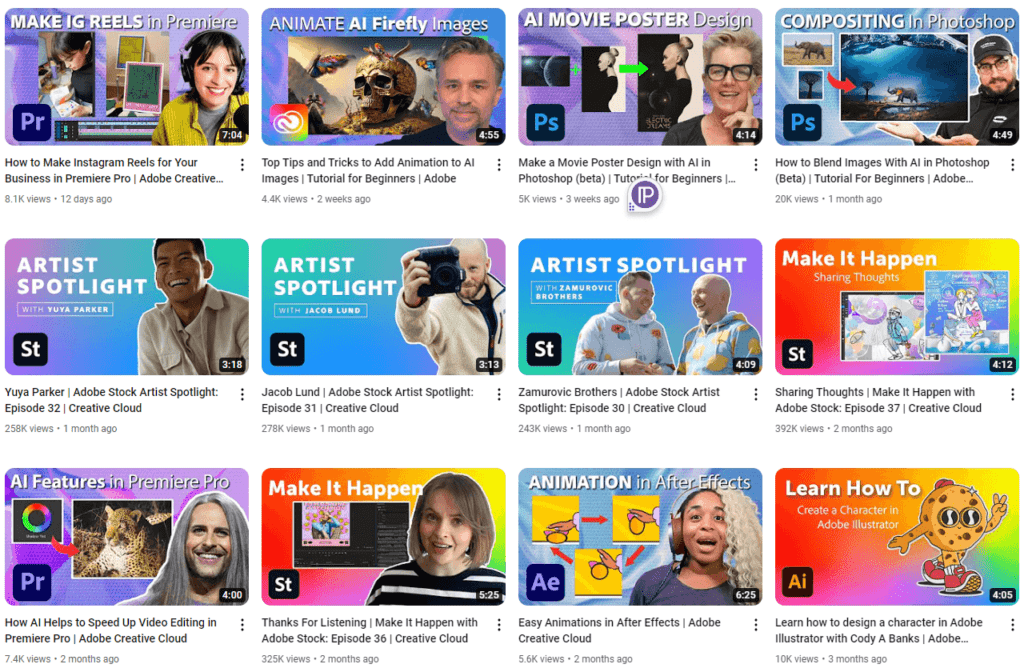
Influencer Marketing
Influencer marketing isn’t about celebrity endorsements. Instead, it’s about partnering with respected industry figures who have a genuine following of professionals and companies that trust their opinions. By collaborating with these industry leaders for promotions or content creation, software businesses can tap into an audience already engaged and interested in the sector. This amplifies reach and adds a layer of credibility to the product, as a trusted voice in the industry recommends it.
Real-World Example

AudiencePlus, an audience management tool, has collaborated with industry influencers and thought leaders to create content and webinars. By partnering with public figures like Danielle Fishel (Topanga from TV’s Boy Meets World), AudiencePlus taps into a broader audience. These collaborations amplify their reach and bolster credibility.

Challenges in SaaS Marketing and How to Navigate Them
While brimming with potential, the software sector presents its own marketing challenges. From extended sales cycles to a saturated market, software businesses often grapple with unique hurdles. Let’s delve into these challenges and explore ways to address them effectively.
1. Extended Sales Cycles
The B2B SaaS sector is characterized by sales cycles that can span several months. According to a report by Salesforce, 68% of B2B sales involve multiple decision-makers, which can extend the SaaS sales process. This elongation is due to the need to convince various stakeholders, each with their own concerns and requirements.
Tips for Overcoming Extended Sales Cycles
- Educational Content: Crafting content that educates potential clients can expedite decision-making. Resources like whitepapers, which are read by 49% of B2B buyers during their decision-making process (DemandGen Report), can be instrumental.
- Nurturing Leads: A nurtured lead can result in a 20% increase in sales opportunities compared to non-nurtured prospects (DemandGen Report). Tools like email campaigns can maintain engagement and guide leads through the funnel.
- Clear Value Proposition: Articulating the tangible benefits of the product can streamline the decision-making process, ensuring stakeholders understand its direct impact on business outcomes.
2. High Market Competition
With the online software market expected to reach $591.8 billion by 2023 and another 18% in 2024 (Gartner), it’s evident that the arena is becoming increasingly saturated. This proliferation means companies are often competing with multiple solutions offering similar functionalities.
Tips for Overcoming High Market Competition
- Differentiation: A clear differentiator can set a product apart. For instance, 89% of B2B marketers believe that brand awareness is the most critical goal, ahead of sales or lead generation (Content Marketing Institute). By highlighting unique features or exceptional customer support, businesses can distinguish themselves.
- Targeted Marketing: Zeroing in on specific segments can yield better results. In fact, segmented email campaigns witness a 14.31% higher open rate than non-segmented campaigns (Mailchimp).
- Engage and Retain: With the cost of acquiring a new customer being five times more than retaining an existing one (Invesp), focusing on customer satisfaction becomes paramount.
3. Rapid Technological Changes
The pace of technological advancements is relentless. What’s cutting-edge today might be obsolete tomorrow. A survey by McKinsey revealed that around 80% of B2B buyers expect real-time interactions and instantaneous responses, underscoring the need for SaaS enterprises to be agile.
Tips for Overcoming Rapid Technological Changes
- Continuous Learning: Staying updated is non-negotiable. Encouraging teams to participate in industry events can ensure they’re equipped with the latest knowledge.
- Feedback Loops: Direct feedback from subscribers can be invaluable. As per a report by Microsoft, 52% of people believe companies need to take action on feedback provided by their customers.
- Agile Development: Embracing an agile methodology can help businesses pivot quickly, ensuring they remain relevant in a rapidly shifting landscape.
Measuring Success in SaaS Marketing
In marketing, the ability to quantify success is more than just a validation of efforts; it’s the compass that guides future strategies, ensuring they’re aligned with business objectives and market demands. This section offers an in-depth exploration of the key performance indicators pivotal to software marketing and the sophisticated tools available for meticulous analysis.
Key Performance Indicators (KPIs) for SaaS Marketing
Understanding and monitoring the right KPIs can provide invaluable insights into the effectiveness of marketing strategies, helping companies refine their approach for optimal results.
| KPI | Description | Why It’s Important | Calculation Method |
| Monthly Recurring Revenue (MRR) | The consistent revenue a business expects every month. | It offers insights into the company’s financial trajectory and stability. | Sum of all monthly subscriptions |
| Customer Acquisition Cost (CAC) | The average expense incurred to acquire a single customer. | It’s pivotal for assessing the return on investment for marketing efforts. | Total marketing spend ÷ Number of new customers acquired |
| Customer Lifetime Value (CLV) | The total net profit from a customer during their association with the business. | It helps companies to understand the long-term financial value of each customer. | Average purchase value x Purchase frequency x Customer lifespan |
| Churn Rate | The percentage of customers discontinuing the SaaS product within a specific timeframe. | It’s a direct reflection of product value and customer satisfaction. | (Customers at start of period – Customers at end of period) ÷ Customers at the beginning of period x 100 |
| Net Promoter Score (NPS) | A metric to gauge customer loyalty and satisfaction. | A higher NPS indicates that customers are more likely to advocate for the product. | Percentage of promoters (score 9-10) – Percentage of detractors (score 0-6) |
| Lead Conversion Rate | The ratio of leads that transition into paying customers. | It evaluates the potency of the sales funnel and the efficacy of lead nurturing initiatives. | (Number of prospects converted ÷ Total leads) x 100 |
Analytical Tools for SaaS Marketing
To effectively monitor these KPIs, businesses need robust analytical tools. Here’s a deeper look into some of the industry’s best:
Google Analytics

Google Analytics is a web analysis service offered by Google, providing detailed statistics and analytical tools for SEO and marketing purposes. As one of the most widely used marketing services on the internet, it assists enterprises in tracking and reporting website traffic, helping them understand user interactions and behaviors.
- Key Features: Offers insights into website traffic sources, user engagement metrics, and detailed conversion paths.
- Price: The basic version is free. Google Analytics 360, tailored for enterprises, is priced around £100,000 annually.
Mixpanel
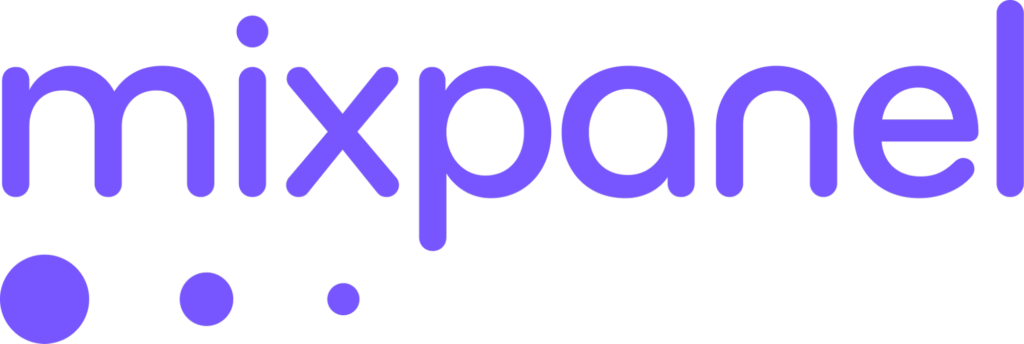
Mixpanel is an advanced analytics platform that focuses on user interactions with web and mobile applications. It offers tools that allow companies to track user engagement, form submissions, and other web events, providing insights into user behavior and product performance.
- Key Features: Specializes in user behavior across websites and applications, offering granular event tracking and detailed retention analysis.
- Price: A free tier is available. Premium plans, offering more extensive features, start at £17 per month.
Kissmetrics

Kissmetrics is a behavioral analytics and engagement platform designed to give marketers and product teams a holistic view of user interactions across multiple devices. With its emphasis on tracking individuals rather than pageviews, it provides a deeper understanding of user journeys and conversion paths.
- Key Features: Focuses on individual visitor’s behavior, allowing businesses to understand user journeys. It also offers A/B testing capabilities.
- Price: Packages commence at £500 per month, with custom pricing for larger enterprises.
Looker

Looker is a modern data platform that allows companies to explore and share real-time business analytics. With its intuitive interface and powerful data modeling, it bridges the gap between business professionals and data, enabling informed decision-making.
- Key Features: A data exploration tool that integrates with various databases, enabling subscribers to create shareable reports and dashboards.
- Price: Pricing is customized based on specific business requirements and scale.
Tableau
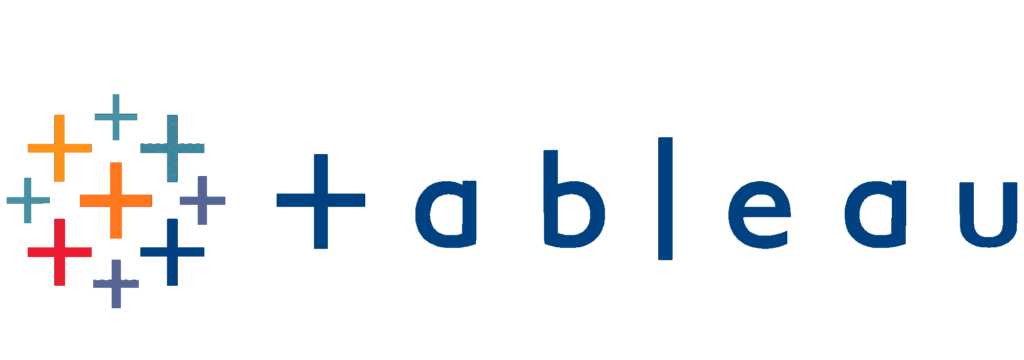
Tableau is a visual analytics platform that is transforming the way businesses use data to solve problems. It empowers users, regardless of technical ability, to visualize and understand their data.
- Key Features: Renowned for its data visualization capabilities, it allows for interactive dashboards, data blending, and real-time collaboration.
- Price: Entry-level plans start at £60 per user per month, with more advanced features available at higher price tiers.
Summary Table: Recommended Tools for Marketing Software
| Analytical Tool | Key Features | Pricing |
| Google Analytics | Website traffic insights, user engagement, detailed conversion paths | Free basic version; Google Analytics 360 at around £100,000 annually |
| Mixpanel | Granular event tracking, user behavior, detailed retention analysis | Free tier; Premium plans start at £17/month |
| Kissmetrics | Individual visitor tracking, A/B testing, user journeys | Starting at £500/month; custom pricing for enterprises |
| Looker | Data exploration, shareable reports, dashboards | Custom pricing based on business needs |
| Tableau | Data visualization, interactive dashboards, real-time collaboration | Starting at £60/user/month; higher tiers for advanced features |
The Takeaway
In the dynamic landscape of B2B SaaS, the significance of a meticulously structured marketing strategy cannot be overstated. Such a strategy paves the way for reaching the right audience and ensures that businesses remain relevant in an industry marked by constant change. As the digital age progresses, the tools and techniques available for marketers will continue to evolve. Hence, it becomes imperative for companies to foster a culture of continuous learning.
Embracing change, staying updated with industry shifts, and being open to external expertise are the cornerstones of enduring success in B2B software marketing. It’s clear that those willing to learn, adapt, and collaborate will be the most likely to succeed and thrive.
With this in mind, partnering with a growth consultancy can be a game-changer for B2B SaaS companies. SaaS consulting agency NUOPTIMA NUOPTIMA bring a huge amount of experience and insights, helping companies navigate the complexities of the market, refine their strategies, and achieve scalable growth. With our expertise, we can identify gaps, suggest actionable solutions, and provide the necessary guidance to ensure efficient and impactful marketing efforts. Book a free discovery call today.
FAQ
B2B SaaS marketing refers to the strategies and tactics to promote software-as-a-service products to other businesses. It focuses on demonstrating the software’s value in solving specific business challenges and enhancing operational efficiency.
A marketing team should be structured around core functions: SaaS product marketing to align offerings with market needs, content creation to drive engagement, demand generation to fuel lead acquisition, and analytics to measure performance. Collaboration between these functions ensures a holistic marketing approach.
The optimal channels for software marketing often include content marketing through blogs and webinars, social media platforms like LinkedIn, email campaigns for nurturing leads, and pay-per-click advertising to drive targeted traffic.
Success in software marketing requires a deep understanding of the target audience’s pain points, a clear value proposition, consistent engagement through relevant content, and the agility to adapt to changing market dynamics.
While the exact amount varies, many B2B software companies allocate between 10% to 20% of their revenue to marketing. However, early-stage startups might invest more to gain traction, while established entities might spend less due to their existing customer base and brand recognition.
